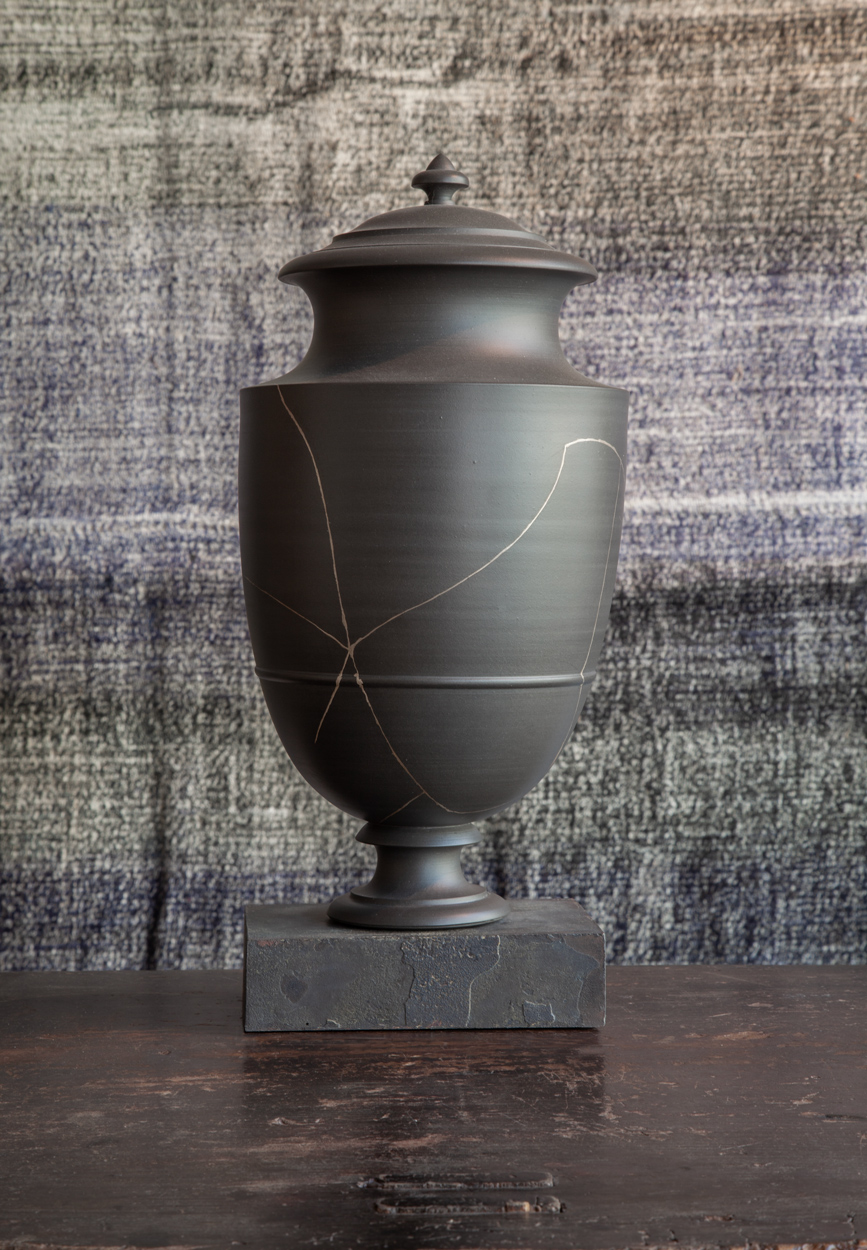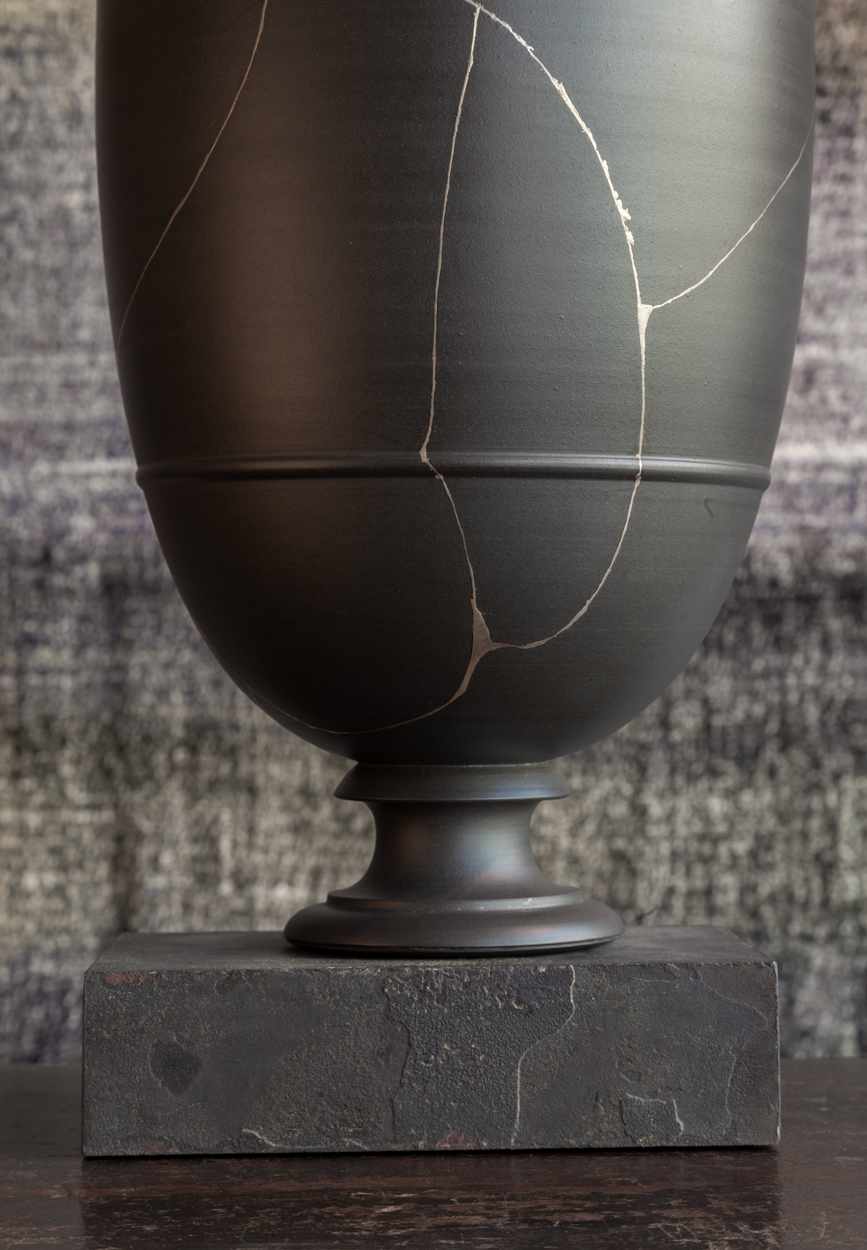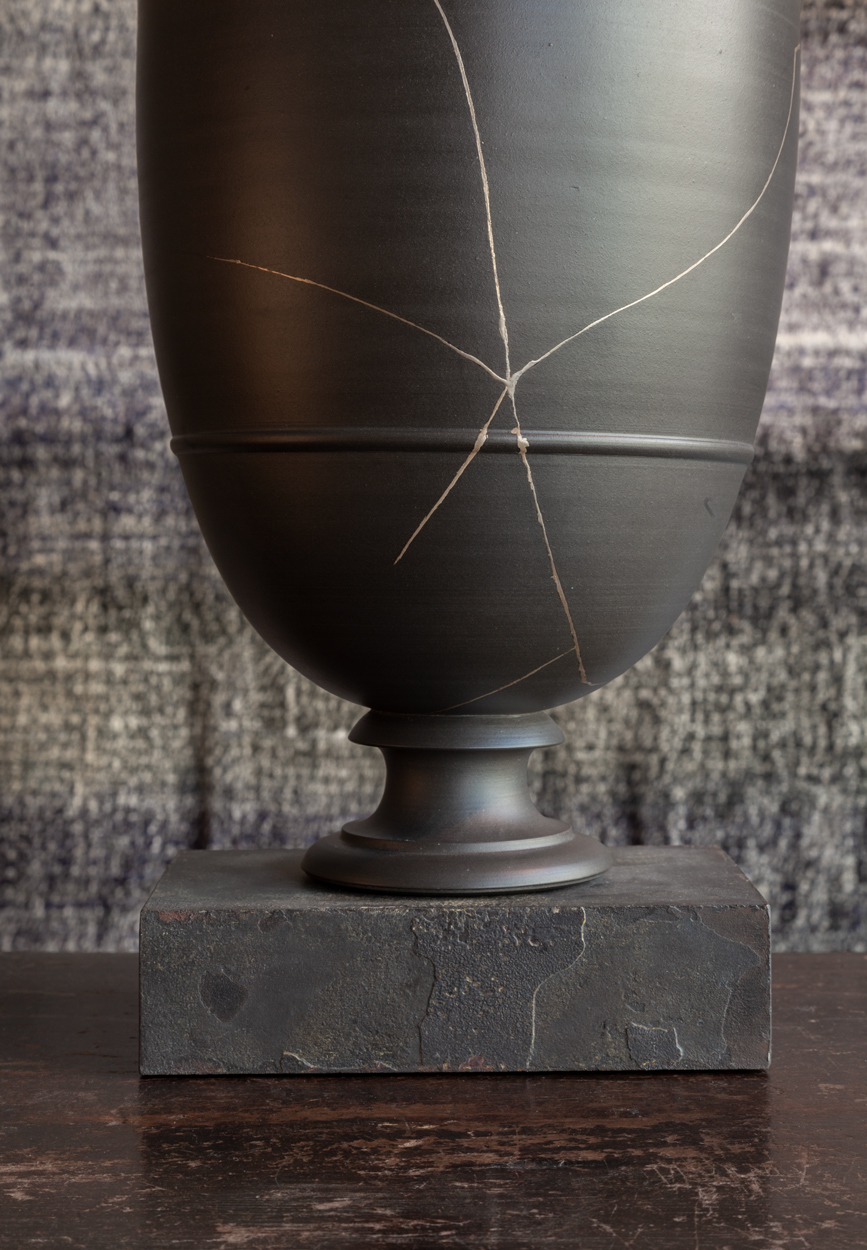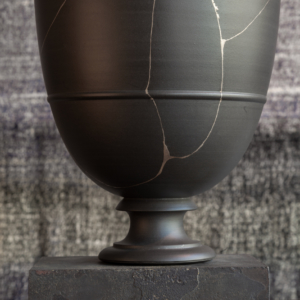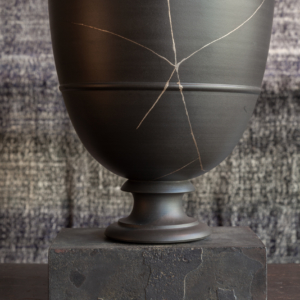The art of repair
Kintsugi – a traditional Japanese technique giving new life to broken ceramics
When ceramics or porcelains break, the belief is either that repairing them will see them lose some of their original value, or that they are quite simply lost. The Japanese however have a completely different philosophy, believing that broken ceramics are not irretrievable. Thanks to the traditional Kintsugi technique, dating back to the end of the 15thcentury, they can enjoy a renaissance and continue their lifecycle, while proudly displaying the traces of their past.
Traditionally, exponents of Kintsugi use lacquer sprinkled with gold powder to repair broken porcelains or ceramics, but they can also use silver (which is then known as Gintsugi) or a simple lacquer (Urushi-Tsugi).
The artist Kumiko Machida used silver to repair Matthew Warner’s simple, strong yet superb stoneware vase which was housed in Peter Kammermann’s gallery for a week during the 2019 Carouge Ceramic Trail. The vase was broken after the exhibition but was given a new beginning thanks to the skill of Machida. The ceramic remains an original work and yet is now completely different, recounting part of its story via its clearly visible scars of pure polished silver.
The art of Kintsugi is part of the Japanese philosophy of wabi-sabi, which recognises the beauty and value of simple, ephemeral, imperfect things. It encourages us to accept the faults in any object and to see in them the delicate work carried out both by time and by mankind.
Receive our newsletter
